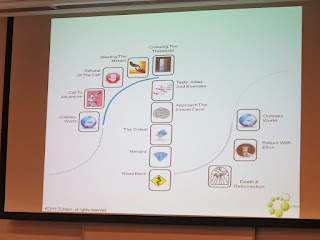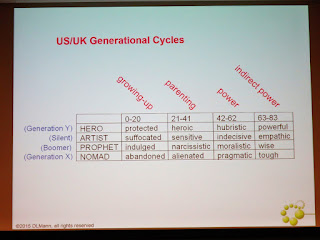Prof. Nakagawa said USIT was created by Ed Sickafus at Ford from USA in 1995. Since 1999, Prof. Toru Nakagawa introduced USIT into Japan and extended it further as a simplified, unified and new generation of TRIZ. One of famous book by Prof. Nakagawa named “TRIZ Home Page in Japan” was introduced (Toru Nakageawa, 2006). The following diagram showed the history of USIT development in Japan.
The overall view of the USIT Process named was described and it was obviously to modify conventional TRIZ Four-Box Scheme. However, Six-Box Scheme provided more guide to lead ideas generation for a new system and solution.
Then five case studies were following the USIT process as “Define the problem”, “Analyze the problem”, “Generate ideas”, “Construct Solutions” and “Implement the Solution” and the case summary was showed in the following table.
Prof. Nakagawa then introduced the basic concepts in USIT (by Ed Sickafus) below.
- Object: A component of the system, and an entity existing by itself and occupy a space
- Attribute: Category of characteristics of Object (Note: not a value)
- Function: Action between Objects, which changes or controls an attribute or the target object.
The summary of case 1 about fixing a string shorter than the needle was shown below.
Usually, we fixed the string by make two loops (Kuru-Kuru) of the strings around the needle and passed the needle forwards (Suu), to pass the string through the loops (In Japanese – Kuru-Kuru-Suu). Through USIT process, different ideas were generated and summarized in the diagram of Six-Box Scheme below.
The second case was summarized below. It was found interest to prevent a staple from being crashed. Through USIT process, “Small Little People” (stated in MATRIZ Level 3 course) was employed in the Box 4 to generate ideas for a new system.
After review five cases, Prof. Nakagawa concluded “USIT - Six-Box Scheme” was a new paradigm of creative problem solving. It solved a fundamental problem in TRIZ that was the lack of clear overall structure. At the end, he introduced his two days USIT Training Seminar structure to us.
Then I took a photo with Prof. Toru Nakagawa in the hall.
The second tutorial speaker was Mr. Darrell Mann (CEO, Systematic Innovation Ltd. UK) and his topic named “Getting More Out of Systematic Innovation: Retraining Problem-Solving Instincts” which held at night on 15 July 2015. He told us instincts had right and wrong direction. However, most of people were thinking to wrong direction.
Firstly, Mr. Darrell Mann showed the tutorial content included “What’s the problem with problem”, “3 sources of poor instinct” and “3 remedies”.
Then Mr. Mann quoted Different Levels of Innovation from the book named “The Future of Management”. He said most of companies for new product were belong to Technology / Officering Innovation (Level 2) and Apple was in Level 3 under Strategy / Management Innovation. For the highest level, Leadership Innovation should be change organization structure.
Mr. Mann stated 3 sources of poor instinct included “Complexity”, “Discontinuity” and “Hierarchy”. He said equipment was complicated (like engine) but living organism (like human being) was complex. Complicate problem could be solved but Complex one might not have solution.
After that Darrell Mann asked why most systematic innovation attempted fail and he performed group discussion. He summarized our ideas and connected those result under their cause-and-effect so as to find the root causes. Darrell Mann also used the Cynefin framework (Complex / Complicated / Obvious / Chaotic) to explain the complex social environments.
He also quoted Bill Gate statement that “We always overestimate the change that will occur in the next two years and underestimate the change that will occur in the next ten.” Then Darrell Mann explained it using “The Hero’s Journey” which also related to S-curve. Nine Window was also mentioned to provide higher level (whole system) thinking.
US/UK generational cycles were discussed and Darrel found that some conflicts existed between GenX (e.g. self-reliant/feedback = telling-off) and Gen& (e.g. love positive feedback).
Last topic was Innovation Capability Maturity Model. It was important because Innovation strategy depended on the capabilities of the organization. In ICMM Level 1, the new idea (like virus) and would be killed very fast inside the organization. In ICMM Level 2, operation excellence and KPIs were stated. In ICMM Level 3, organization expected to repeat innovate. In ICMM Level 4 making money in Professional Management had a large portion then non money making in Learning & Innovation. ICMM Level 5 like Silicon Village.
At the end, Darrell Mann concluded that Innovation is:
i) Workout where you’re going (PERFECT)
ii) Find the barriers (CONTRADICTION)
iii) Eliminate them (TRENDS)
Q&A Session
The last tutorial was held on 17 July 2015 Afternoon and presented by Prof. D. Daniel Sheu (Professor, National Tsing Hua University) and his topic entitled “Parameter Deployment and Manipulation: A unified theory for solving physical contradictions”.
To solve physical contradictions based on the novel ideas of Parameter Deployment, Parameter Manipulation and Parameter Transfer were discussed. Parameter Transfer is to separate conflicting parameters by transferring one or both of the contradicting demands (at Parameter (P) or Object (O) level) to some seemingly unrelated parameter(s) to solve the problem.
Problem solving process included:
- Identifying physical contradictions
- Identifying related components
- Deploying parameters
- Manipulating parameters
- Integrating solutions
(Remark: It is pity that I was not available to attend Prof. Sheu’s tutorial. I took some photos of his presentation in parallel section and shared in here.)
Reference:Institute of Systematic Innovation, HK - http://www.isi.org.hk/
HKIE-MIE Division - http://www.hkie.org.hk/eng/html/aboutthehkie/Disciplines/mie.asp
HKSQ - http://www.hksq.org/index.asp
20130625: International Symposium on Innovation Excellence and Practices 2013 - http://qualityalchemist.blogspot.hk/2013/06/international-symposium-on-innovation.html
20150715: The 6th International Conference on Systematic Innovation - ICSI 2015 (Day 1) - http://qualityalchemist.blogspot.hk/2015/07/the-6th-international-conference-on.html
20150715: The 6th ICSI 2015 – Conference Tutorials - http://qualityalchemist.blogspot.hk/2015/07/the-6th-icsi-2015-conference-tutorials.html
20150716: The 6th International Conference on Systematic Innovation - ICSI 2015 (Day 2) - http://qualityalchemist.blogspot.hk/2015/07/the-6th-international-conference-on_16.html
20150716: The 6th International Conference on Systematic Innovation - ICSI 2015 (Day 3) - http://qualityalchemist.blogspot.hk/2015/07/the-6th-international-conference-on_17.html



















沒有留言:
發佈留言